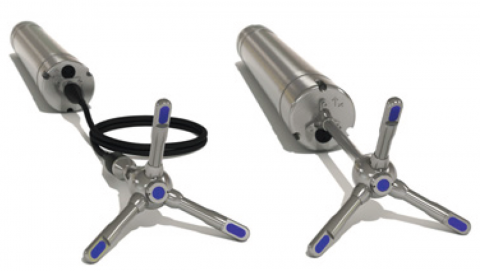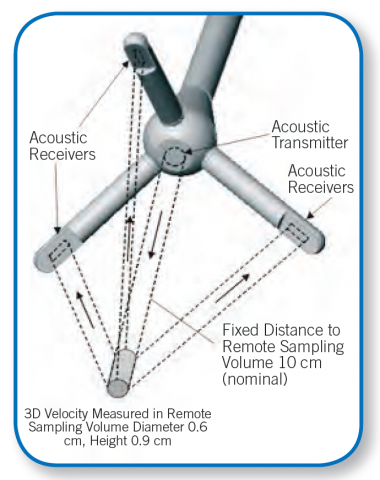The ADV is a 3-D velocity sensor based on the Doppler shift effect (just like its brother the ADCP). It is implemented as a focal point acoustic Doppler system and consists of a transmitter and three receivers. The three 10-MHz receivers are positioned in 120° increments on a circle around a 10-MHz transmitter. The probe is submerged in the flow and the receivers are slanted at 30° from the axis of the transmit transducer, focusing on a common sample volume that is located approximately 10.8 cm from the probe. The size of the sample volume is a function of the length of the transmit pulse, the width of the receive window, and the beam pattern of the receive and transmit pulses. The system operates by transmitting short acoustic pulses along the transmit beam. As the pulses propagate through the water column, a fraction of the acoustic energy is scattered back by small particles suspended in the water. The phase data from successive coherent acoustic returns are converted into velocity estimates using a pulse-pair processing technique. Speed (U) is later calculated as a function of the time derivate of phase data (dp/dt), speed of sound in water (c), and ADV's operating frequency (f) as:
U = c(dp/dt)/(4*pi*f)
Nortek Vector and Sontek Argonaut-ADV are examples of this type of instrument.
http://www.sontek.com/productsdetail.php?Argonaut-ADV-6
http://www.nortek-as.com/en/products/velocimeters/vector

